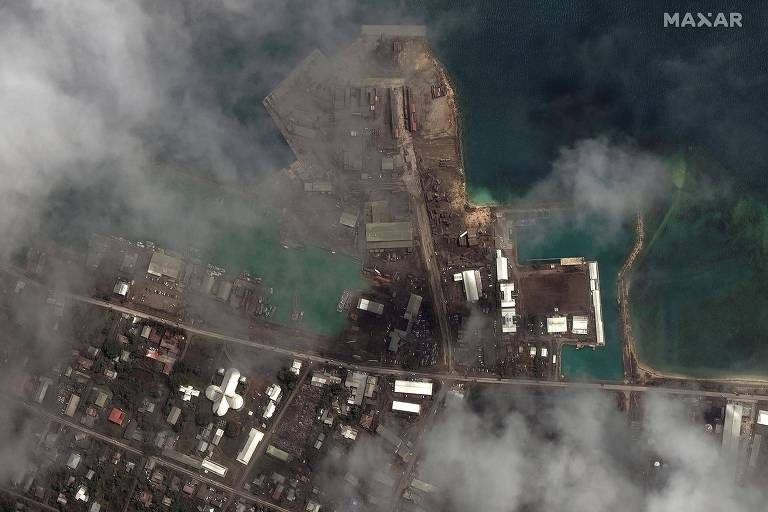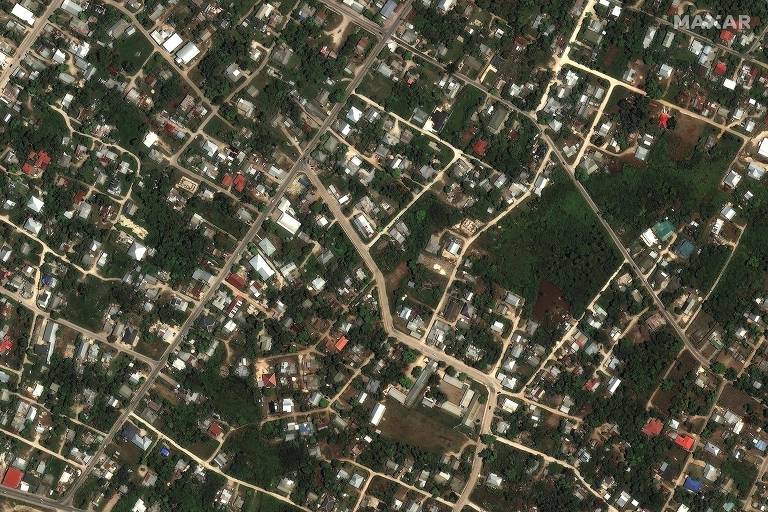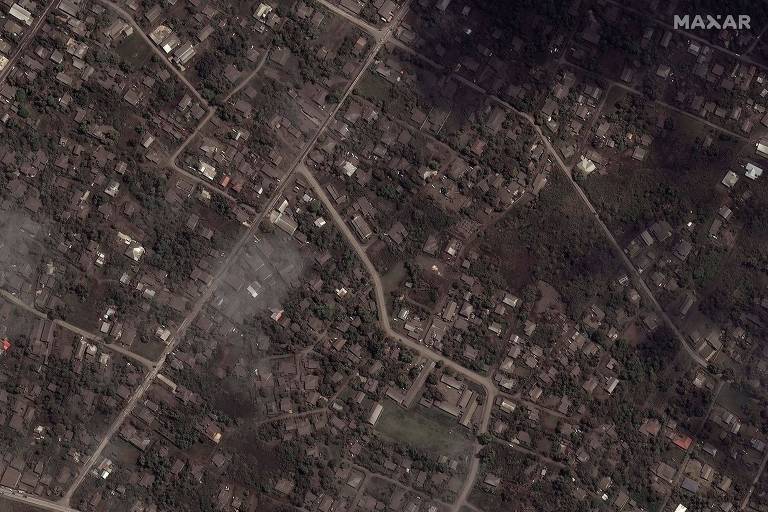A clean-up and evacuation operation has begun in Tonga. After days of silence, the island nation’s government said an epic volcanic eruption and the tsunami and ash clouds that followed were “an unprecedented disaster”.
International efforts to bring assistance face not only ashes and damaged lines of communication, but also fears that the archipelago, which has so far managed to avoid Covid, will be overrun by the virus if it allows humanitarian workers who may be carriers to enter. .
At a news conference on Tuesday (18), Jonathan Veitch, UNICEF Resident Coordinator for the Pacific Islands, said that relief work would be conducted in a way that would bring supplies to Tonga without contact. directly with outsiders.
“We are not going to do anything that jeopardizes the safety of the population,” he told reporters remotely from Fiji. But even transporting supplies will take some time.
Australia and New Zealand have loaded planes ready to take off. But debris from Saturday’s volcanic eruption left runways at Tonga’s airports unusable.
“It’s been more difficult than anticipated to remove the ash layer,” Veitch said. “We thought the track would be operational yesterday.” Hydraulic equipment for quick cleaning of the runways is being sent to Tonga by ship, but it should still take six to eight days to reach the affected area.
The same ships are carrying food and water, which are urgently needed in parts of the archipelago. “We heard that stores are running out of food stocks,” said the coordinator.
For three days after the eruption of the Hunga Tonga-Hunga Ha’apai volcano, 65 kilometers from Tonga, little news reached the country of around 100,000 people. The eruption triggered “a mushroom-shaped volcanic plume” and a tsunami with waves of up to 15 meters that washed over the west coast of several islands. The internet went down, and communications, cut off by the eruption, remained limited.
Satellite images show magnitude of tsunami impact in Tonga

The port facilities in the country’s capital, Nukualofa, on 29.Dec.21, before the eruption of the Hunga Tonga-Hunga Ha’apai volcano and the tsunami, and this Tuesday, 19.Jan.22- – Maxar Technologies / Reuters


Houses in a neighborhood of the Tongan capital Nukualofa before the eruption and tsunami, on 29.Dec.21, and this Tuesday, 18.Jan.22
The first official news came on Tuesday night, when the government of Tonga said it had begun assessing damage from the eruption and confirmed the deaths of three people, including a British national, a 65-year-old woman and a 49-year-old man. According to the statement, search and rescue teams were deployed as of Sunday morning, and nearly all homes on some of the hardest-hit islands, including Mango, Gonoifua and Nomuka, were damaged or destroyed.
The government said it had set up evacuation centers and was providing relief items. It also reported that volcanic ash had seriously affected supplies of clean water. Several countries have prepared to help, but the big question is how to do it without putting the population at risk.
“The problem that has to be the most pressing is: how can we 100% guarantee that we won’t bring Covid to this country?” said Jonathan Pryke, director of the Pacific Islands program at the Lowry Institute, an independent think tank in Sydney. “Any goodwill that could be created by assistance will be totally undone if they bring Covid to Tonga.”
Tongans’ fears reflect past traumas. Across Polynesia, a region spread across the South Pacific and made up of about 1,000 islands, diseases carried by outsiders have been a recurring theme throughout hundreds of years of history.
Regular contact with European colonizing forces came relatively late to places like Tonga—Captain James Cook visited the archipelago in 1773, 15 years before the first group of Britons settled in Australia—but it had a devastating impact. Over the next 100 years, epidemics of measles, dysentery, and influenza ravaged island communities across the South Pacific.
A landmark study published in 2016 concluded that in Tonga, Hawaii, Fiji, Samoa and Rotuma (a dependency of Fiji) the spread of measles in the early 19th century killed up to a quarter of the population of all ages. In Tonga, another round of deaths arrived under even more dubious circumstances with the Spanish flu. According to historian Phyllis Herda, from the University of Auckland, New Zealand, in November 1918 the steamship Talune introduced the virus to Tonga because its captain, John Mawson, concealed the risk after setting sail from Auckland.
When the ship docked in the Tongan capital Nuku’alofa with 71 sick passengers and crew, the captain reportedly ordered everyone on board to “dress up and pretend not to be sick” so the goods brought by the vessel could be unloaded. Nearly 2,000 Tongans died in the ensuing outbreak – about 8% of the population.
Covid-19 has been seen through the lens of this experience, a fact that is not surprising. Tonga recorded just one case of the disease, in October, and requires travelers arriving in the country to self-quarantine for 21 days. About 60% of the population has already received two doses of a vaccine against Covid.
Curtis Tu’ihalangingie, deputy director of the Tonga High Commission’s mission to Australia, said Tongan officials are in discussions with the Australian and New Zealand governments and partner donors on how to bring assistance to the country without putting it at risk from the coronavirus. “We will collaborate with authorities in Tonga to conform to whatever expectations and protocols they have set,” New Zealand Prime Minister Jacinda Ardern said on Sunday.
Peeni Henare, the New Zealand defense minister, said there were other ways to prevent transmission. “We’ve had several operations in the Pacific over the past two years that didn’t involve contact,” he said.
About two dozen UN humanitarian workers were already stationed in Tonga when the volcano erupted, and Veitch said they are working, including providing medical assistance. But aid organizations in Australia and the region said they were following government guidance on how best to deliver assistance.
“We will not send anyone to Tonga unless requested to do so, and when that happens we will follow the directions that have been given,” said Katie Greenwood, who heads the Pacific Office of the International Federation of Red Cross and Red Crescent Societies.
She said the Red Cross has about 70 volunteers in Tonga, with access to enough supplies for 1,200 families, including tarps, blankets and kits to build shelters.
It is difficult to judge whether it will be enough. According to Tu’ihalangingie, phone or internet connections will take weeks to fully restore. “We are still in limited contact with Tonga,” he told ABC Radio in Australia. “We still don’t have direct communication with our government.”
.










